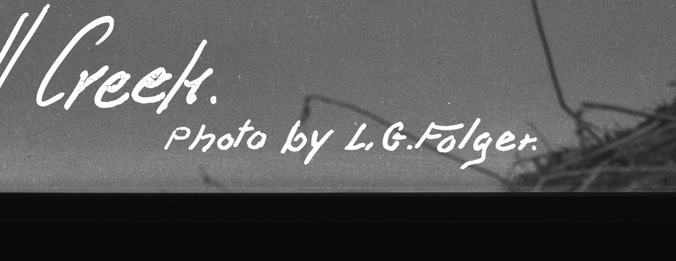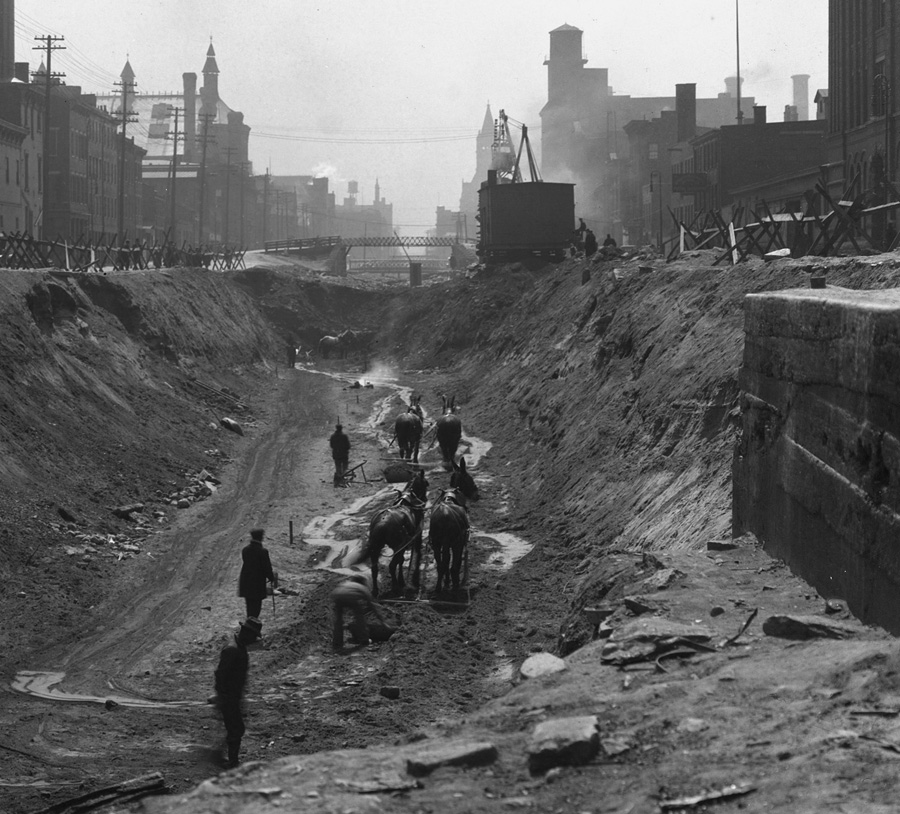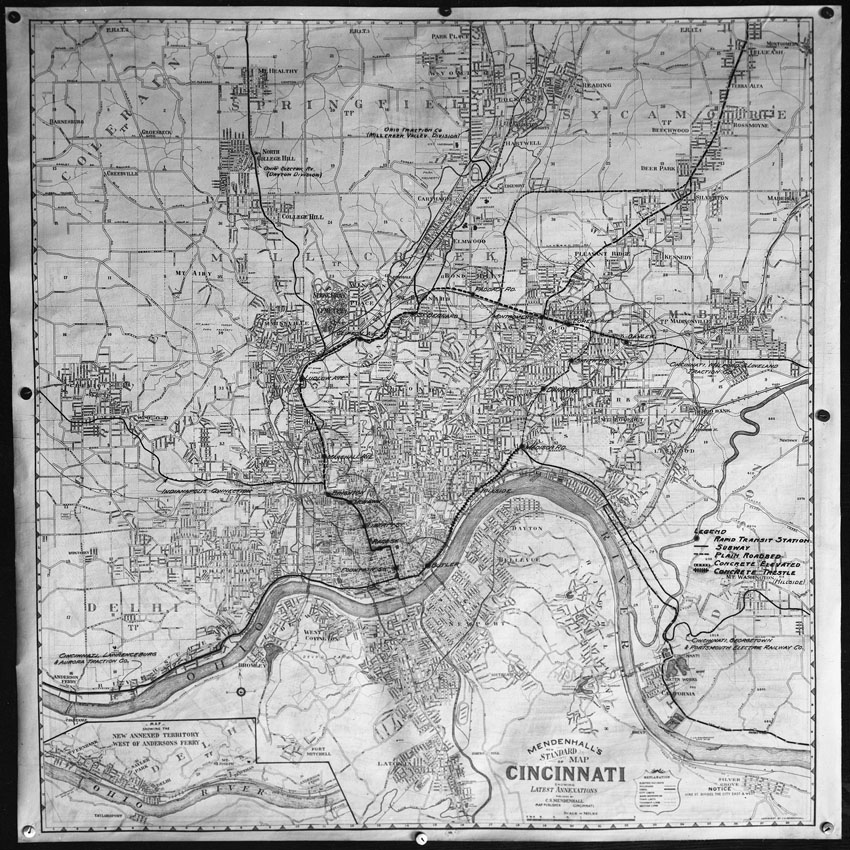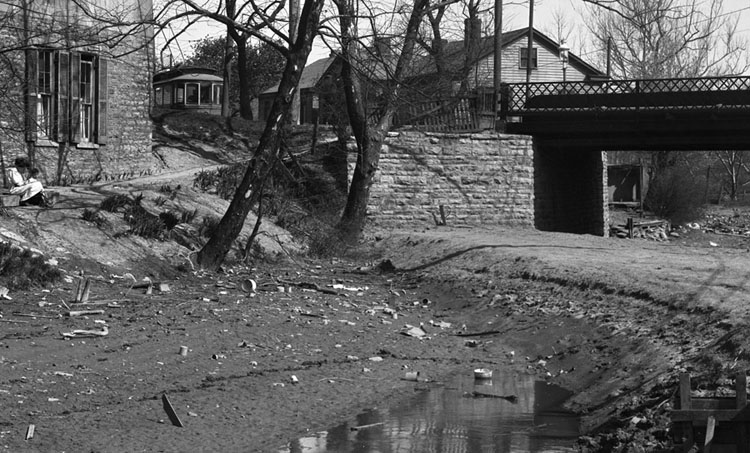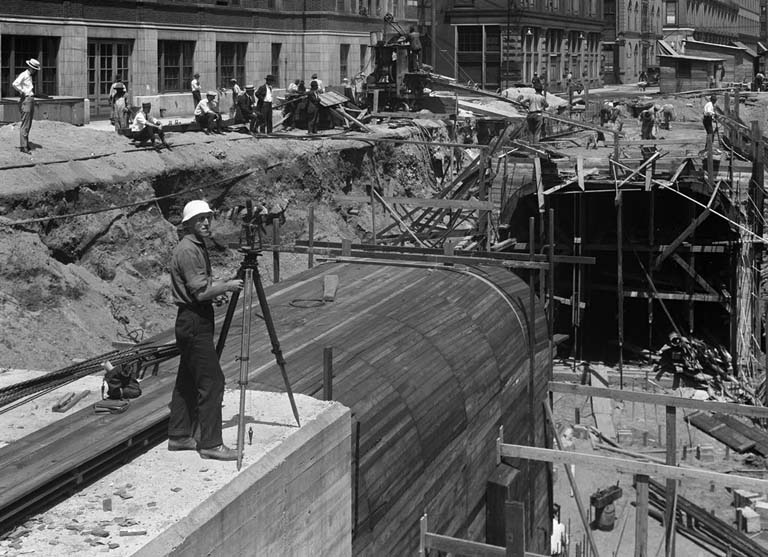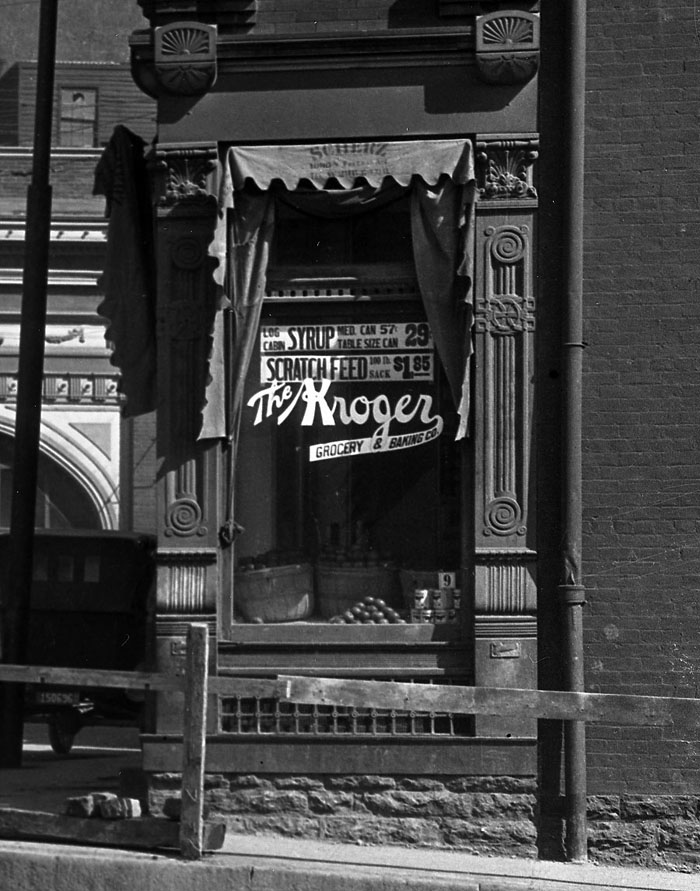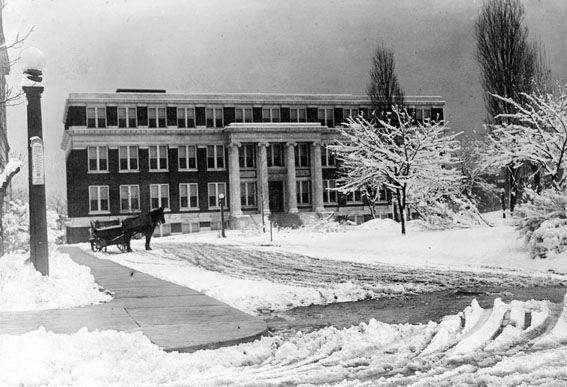By: Angela Vanderbilt
As I’ve mentioned in earlier blog postings, the identity of the subway and street improvements photographer – or more likely, photographers, due to the 30-year time span of the collection – was not known at the outset of our digitization project. As more negatives are sent for scanning, we’ve gotten closer to revealing the identity.
Just last week, our scanning service came across a negative with “Photo by L.G. Folger” written at the bottom, below the date and location of the photograph. Very exciting news! This same name has also been found on the back of printed photographs. This is definitely a step in the right direction, considering it was found written directly on a negative as well as on prints! Other prints have a round stamp on the back with the information “W.T. Myers & Co., 238 E. 4th St., Cincinnati, Ohio”.

